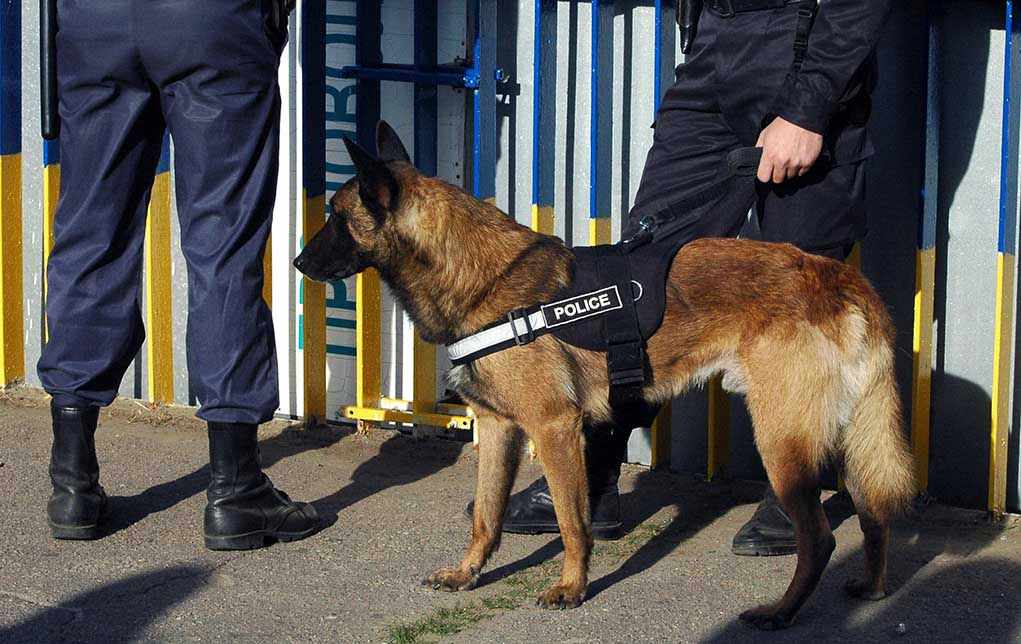
Get ready, America—a new air scanner might soon replace drug-sniffing dogs at our borders, and the implications are both startling and significant.
At a Glance
- A cutting-edge device called VaporID could soon replace traditional drug-sniffing dogs at U.S. borders.
- This microwave-sized device detects trace amounts of narcotics in the air, offering a non-intrusive screening method.
- The potential shift raises questions about job security for K9 handlers and the impact on border communities.
- Concerns over privacy and civil liberties may intensify with increased surveillance technology.
Revolutionizing Border Security: The Rise of VaporID
The U.S. Customs and Border Protection (CBP) is exploring a futuristic device called VaporID that could revolutionize how we handle drug detection at our borders. This microwave-sized marvel detects trace amounts of narcotics in the air, offering a non-intrusive, rapid screening method. As the CBP looks to modernize its technology fleet, VaporID presents a compelling alternative to our beloved K9 units. But what does this mean for the men and women—and their canine partners—who have faithfully guarded our borders for decades?
While the device promises efficiency and speed, it also raises pressing questions about job security for K9 handlers and the traditional methods we’ve depended on for so long. Could this be yet another example of technology replacing hardworking Americans? The stakes are high, and the outcomes are uncertain. But one thing is for sure: VaporID is a game-changer, and its deployment could shape the future of border security in ways we’re only beginning to understand.
The Push for Technological Advancement
CBP has been on a mission to bolster its technological capabilities for years. The agency has allocated significant resources towards non-intrusive inspection technologies, autonomous surveillance towers, and drones. VaporID fits neatly into this trend, promising to enhance operational efficiency while reducing the need for canine units. The development of VaporID is part of a broader strategy to automate and streamline border operations, ideally reducing wait times and increasing throughput at crossings.
However, this technological push doesn’t come without its critics. Concerns over privacy and civil liberties loom large. With the introduction of more surveillance technology, advocacy groups are sounding the alarm about potential overreach and the erosion of individual rights. As always, the balance between security and freedom is a delicate one, and it’s a balance that policymakers must navigate with care.
Stakeholder Dynamics and Implications
The potential deployment of VaporID affects a wide array of stakeholders. The CBP, with its procurement authority and operational mandate, stands at the forefront of this technological shift. The agency’s commitment to adopting innovative solutions is clear, yet it must also consider the implications for its workforce. K9 handlers and their canine partners face an uncertain future, with potential job displacement on the horizon.
On the other side of the equation, technology vendors are eager to seize the opportunity presented by this new frontier. Developers of devices like VaporID are motivated by contracts and market share, and their influence on the government’s decisions cannot be underestimated. Meanwhile, Congress and federal oversight bodies hold the purse strings and will undoubtedly play a critical role in determining the extent of VaporID’s deployment at our borders.
Looking Ahead: Challenges and Opportunities
As VaporID undergoes evaluation, the path forward is fraught with challenges and opportunities. In the short term, the device could significantly improve operational efficiency, speeding up the screening process and reducing wait times for travelers and commercial operators. However, the long-term implications are more complex. The potential cost savings from reduced personnel and training expenses must be weighed against the initial investment in new technology.
Moreover, the effectiveness of VaporID in detecting narcotics and reducing false positives or negatives remains to be seen. If successful, this technology could revolutionize border security and become a model for other law enforcement agencies. But the risks of overreliance on technology and the potential erosion of civil liberties must not be ignored. As we stand on the brink of this technological transformation, the debate over security, privacy, and the future of work at our borders is more relevant than ever.
Sources:
EFF and independent watchdog reports on border surveillance expansion
CBP official technology and procurement pages
CBP official technology and procurement pages















